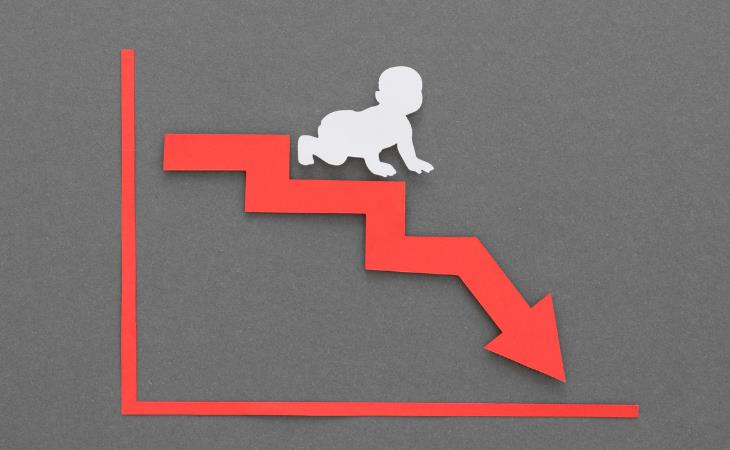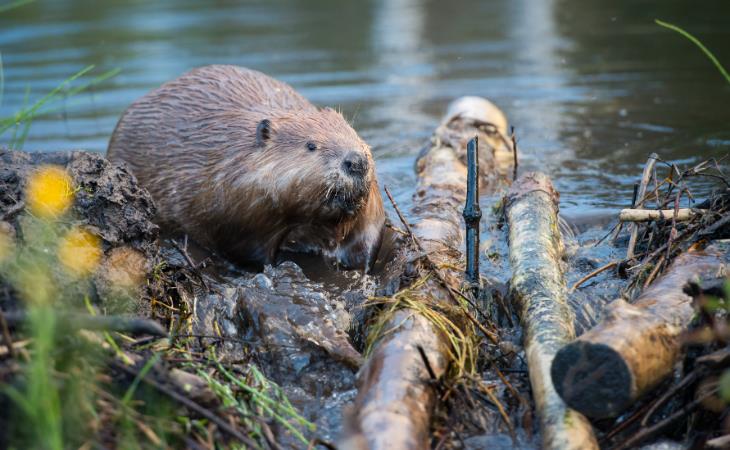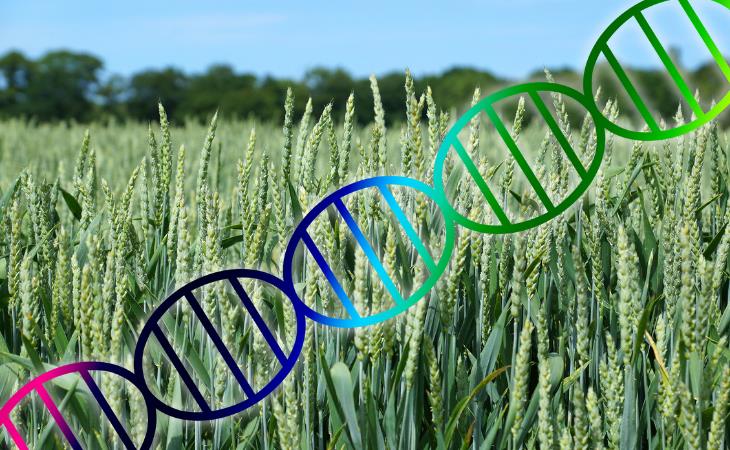Giant pandas, which have been the focus of relentless conservation work in China, are no longer considered endangered, according to Chinese officials. This achievement comes after several decades of dedicated efforts that have resulted in a wild population of approximately 1,800 pandas. The species is set to be re-categorized as vulnerable, signifying a significant conservation success story. China's dedication to preserving its beloved pandas has involved establishing vast panda reserves across various mountainous regions.
In the 1980s, China's panda population dwindled to a mere 1,114 individuals. However, according to a 2014 survey, the number of wild pandas had risen to 1,864. Following three decades of gradual yet consistent growth, the IUCN has officially reclassified the panda's status on the Red List of Threatened Species.
2. Groundbreaking new Alzheimer’s drug slows progression
A new and powerful drug has shown the potential to significantly slow the progression of Alzheimer's disease, making it a crucial breakthrough in the fight against the disease. Results from a late-stage clinical trial have confirmed the effectiveness of Donanemab, an experimental Alzheimer's drug from drugmaker Eli Lilly, in slowing down cognitive decline among patients in the early stages of the ailment.
The medication has cleared a successful clinical trial and is all set for approval by the Food and Drug Administration. Reports suggest that this drug is designed to target the accumulation of amyloid protein in the brain and has been shown to slow 'clinical decline' in patients by 35%. When the data from patients with varied amyloid levels was put together, a surprising 22.3% reduction in disease progression was observed.
3. Scientists discover a microbe that will help the climate
On the Italian island of Vulcano, dedicated scientists have made an intriguing discovery that offers a glimmer of hope in the ongoing battle against the climate crisis. During their exploration of volcanic seeps, a team of divers chanced upon a microorganism called cyanobacterium, which exhibits an astonishing ability to rapidly consume CO2. These researchers are optimistic about harnessing these naturally occurring CO2-absorbing microbes as an efficient solution to reduce greenhouse gas concentrations in the atmosphere.
While it is widely accepted that ending the use of fossil fuels is pivotal in addressing the climate emergency, many scientists also emphasize the importance of extracting CO2 from the air to minimize future damage. This carbon-capturing microbe, while not a magic solution, represents yet another valuable tool in the ongoing efforts to combat climate-altering gases, highlighting the need for a multifaceted approach.
4. The Earth’s ozone layer could recover in as little as 40 years’ time
As per the United Nations' 2022 evaluation of ozone depletion, there is hope that the Earth's ozone layer might experience full recovery over the course of the next 40 years. There are a variety of natural gases in this important layer that act as a shield, protecting our planet from the sun's harmful ultraviolet rays that could lead to uninhabitable temperatures on our planet.
It wasn't until the 1970s that scientists discovered an important discovery: the negative influence of "chlorofluorocarbons" found in some solvents and refrigerants on our planet's natural defense against the sun. This revelation led to the inception of the Montreal Protocol in 1989, a landmark global agreement aimed at phasing out the use of these harmful substances.
The Earth has been gradually rebuilding its ozone layer ever since. Therefore, the UN's declaration that the ozone layer might recover within just four decades is a remarkable milestone for humanity.
5. Child mortality has come down significantly
Over the last three decades, child survival rates have improved drastically, with the likelihood of a child living past the age of five growing significantly. In 2021, just 1 in 26 children were at risk of not reaching that age, compared to 1 in 11 in 1990. Furthermore, progress in reducing child mortality has increased, with yearly reduction rates rising from 1.8% in the 1990s to 4.0% between 2000 and 2009 and continuing at 2.7% from 2010 to 2021.
A newborn's under-five mortality rate refers to the likelihood that a child will die before reaching the age of five, expressed as the number of deaths per 1,000 live births. The global under-five mortality rate fell by 59% between 1990 and 2021, from 93 deaths per 1,000 live births to 38 in 2021. Despite this significant progress, ensuring child survival remains a top priority. Every day in 2021, around 13,800 children under the age of five died, an unacceptably high number of entirely preventable child deaths.
6. An upsurge in the number of children reading
Screen time has earned a somewhat negative reputation, and this isn't without reason. However, when used in a constructive manner, it can also yield positive results for children. The 2023 report, entitled What Are Kids Reading? highlights a substantial increase in the reading habits of British and Irish children. They have collectively consumed 27 million books in the past year, marking a 25% increase from the previous year. One of the main drivers behind this positive trend is the emergence of Booktok, a platform where young readers exchange concise book reviews.
7. NHS to offer drug to treat inherited cancers
Cancers of the breast and prostate are among those that are commonly inherited as a result of faulty versions of the BRCA genes. For those dealing with these cancers, there's a promising development: the NHS has granted approval for olaparib, a targeted therapy tailored to combat this particular cancer subtype. This groundbreaking treatment not only enhances the quality of life for patients but also reduces the risk of recurrence.
About 5% of women with breast cancer bear these inherited gene mutations, and olaparib is projected to boost their survival chances by roughly one-third while also offering extended life and improved quality of life for prostate cancer patients.
8. Beavers are returning to London, and they might save a local train station from flooding
After a 400-year absence following their extinction due to overhunting, beavers are making an incredible return to London. These industrious creatures are set to be reintroduced into Paradise Fields in Ealing, an expansive eight-hectare area teeming with woodlands and wetlands, just a stone's throw away from Greenford Tube station. This initiative is part of an overall effort aimed at reducing urban flooding hazards and promoting a variety of wetland ecosystems.
9. Scientists are genetically modifying crops to provide more food to people in need
Building upon the elementary knowledge of photosynthesis, crop sustainability expert Steve Long has harnessed genetic engineering to amplify this natural process. He aims to boost crop yields by accelerating crop photosynthesis, thereby helping people who struggle with food insecurity to acquire the nutrition they need to survive.
He provided the example of cowpea, a crop found in West Africa that is similar to soybeans. Collaborating with fellow scientists, he developed a variant of cowpea boasting resistance to insects and the potential for increased yields through enhanced photosynthesis.
Long says that this technology has the power to “reduce the risk of food insufficiency, protect the environment without moving onto more land to produce more food — and maybe even remove carbon dioxide from the atmosphere.”
10. Doctors are reimagining pain with the simple technology of cold and vibration
Originally developed to ease the vaccination experience for needle-fearing children, Dr. Amy Baxter's invention, Buzzy, uses a combination of cold and vibration to alleviate discomfort. However, Baxter's vision extends far beyond this invention. She hopes to reinvent our understanding of pain by advocating a switch from the conventional objective of achieving complete pain-free status to one based on maximizing individual comfort. Her innovative approach targets the reduction of opioid dependence and a reevaluation of pain perception in the brain.
Her current study focuses on establishing a drug-free approach to treating lower back pain and using innovative pain and nausea evaluation methodologies in pediatric settings to improve the care provided to young patients.
11. Spain is giving pets the same legal status as humans
Spain, long associated with bullfighting, is making significant strides in animal rights by officially classifying domestic animals as "living beings" rather than mere property. This legal amendment necessitates treating dogs and cats on par with children in cases involving divorce, inheritance, or debt resolution in court.
Judges must consider the welfare of the animal in divorce hearings where they decide who gets the family dog, just as they would if they were dealing with children. Shared custody of the pet will also be a possibility for courts, who must also decide who pays for vet expenses and the animal's food.
The new legislation equates pet mistreatment with the same legal gravity as if it were an act of abuse towards a human. Moreover, if an individual encounters an abandoned pet, they are morally obliged to either seek out the owner or alert the authorities, just like they would handle a lost child. France, Germany, Austria, and Portugal are among the European nations that have already granted pets the same legal standing.











